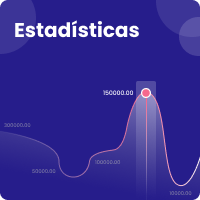Spreading High-tech Industry Innovations in Colombia and Mexico. A Qualitative Input-Output Analysis
Abstract
Economic structure integration is an expression of market complexity that depends on the level of technology that has been adopted. This work is based on the premise that, in developed countries, the high technology industry (HTI) has greater productive linkage, which allows it to spread any growth momentum. The paper questions the role of the HTI in expanding innovations in the Colombian and Mexican economies. Using a qualitative input-output analysis, we prove that the spreading degree of the HTI is similar between these economies. The results point out that, while Colombia has higher innovative propagation in domestic structure, Mexico has a greater effect on the output. Nonetheless, the HTI is diffusive in both economies but they receive innovations only when imported interme diate inputs are used in the production process. In the Mexican economy, innovations expand due to the use of imported intermediate inputs
Downloads
Languages:
esReferences
Ardila, R. (2014). Caracterización de la industria farmacéutica en Colombia y análisis de la competencia desde la perspectiva de la planeación estratégica. Revista Teckne, 12(2), 23-28.
Aroche F. (2006). Regímenes de crecimiento, cambio estructural y coeficientes de insumo. El Trimestre Económico, LXXIII(4)(292), 881-902.
Bon, R. (1989). Qualitative Input-Output Analysis. In R. E. Miller, K. R. Polenske y A. Z. Rose (Eds.), Frontiers in Input-Output Analysis (222-231). Nueva York: Oxford University Press,
Consejo Nacional de Ciencia y Tecnología (Conacyt) (2013). Informe general del estado de la ciencia, tecnología e innovación. México, Ciudad de México: autor.
Departamento Administrativo Nacional de Estadística (DANE) (2015). Encuesta de Desarrollo e Innovación Tecnológica. Bogotá: autor.
Duque, J., Rey, S. and Gómez D. (2009). Identifying Industry Clusters in Colombia Based on Graph Theory. Ensayos sobre Política Económica, 27(59), 14-45. https://doi.org/10.32468/Espe.5901
Forsell O. (1988). Growth and the changes in the structure of the finnish economy in the 1960s and 1970s. En M. Ciaschini (Ed.), Input-output analysis. Current development (pp. 287-302). New York: Chapman and Hall. https://doi.org/10.1007/978-94-009-2607-3_18
García, A., Aroche, F. and Ramos, C. (2007). Determinación de coeficientes importantes por nivelestecnológicos una aproximación desde el modelo de Miyazawa. Investigaciones Económicas, XXI(1), 161-190.
García, E. (2014). Ranking: las 10 empresas farmacéuticas con mayores ventas en México. Sentido Común. Recovered from http://bs.sentidocomun.com.mx/articulo.phtml?id=12595&auth=qkpzienvbq73btr
Jackson, R. W. (1991).The Relative Importance of Input Coefficients and Transactions in Input Output Structure. In J. H. Llewelyn Dewhurst, R. C. Jensen y G. Hewings (Eds.), Regional input-output modelling. New developments and interpretations (pp. 51-65). Aldershot: Avebury.
Kaldor, N. (1966). Causes of the slow rate of economic growth of the United Kingdom: an Inaugural Lecture. Cambridge: Cambridge University Press
Leontief, W. (1986). Input-output economics. New York: Oxford University Press.
Márquez, G. (2010). Evolución y estructura del PIB. In S. Kuntz Ficker (Coord.), Historia económica general de México. De la colonia a nuestros días (pp. 549-572). México, Ciudad de México: El Colegio de México, Secretaría de Economía,
Marquez, M. A. (2018). La derrama de las exportaciones en países de Latinoamérica. Problemas del Desarrollo, (193) [en prensa]. https://doi.org/10.22201/iiec.20078951e.2018.193.61281
Marshall, A. (1931). Principios de economía. Introducción al estudio de esta ciencia. Barcelona: Biblioteca de Cultura Económica, Consultor Bibliográfico.
Miller, R. and Blair, P. (2009). Input-output analysis. Foundations and extentions. New York: Cambridge University Press. https://doi.org/10.1017/CBO9780511626982
Organización de las Naciones Unidas para el Desarrollo Industrial (ONUDI) (2015). Informe sobre el Desarrollo Industrial 2016. El rol de la tecnología y la innovación en el desarrollo industrial inclusivo y sostenible. Resumen. Viena
Pasinetti, L. (1973). The Notion of Vertical Integration in Economic Analysis. Metroeconomica, 25(1), 1-29. https://doi.org/10.1111/j.1467-999X.1973.tb00539.x
Ramírez de la O, R. (1983) De la improvisación al fracaso. La política de la inversión extranjera en México. México, Ciudad de México: Centro de Desarrollo, Ediciones Oceano.
Sakurai, N., Papaconstantinou, G. and Ioannidis, E. (1997). Impact of R & D and technology di usion on productivity growth: empirical evidence for 10 OECD countries. Economic Systems Research, 9(1), 81-109. https://doi.org/10.1080/09535319700000006
Schnabl H. and Holub, H (1979). Qualitative und quantitative, aspekte der input-output analyse: Ansatzpunkte zu einer neuorientierung der konjunturpolitik. Zeitschrift für die gesamte staatswissenschaft / Journal of Institutional and Theorical Economics, (4), 657-678.
Schnabl H. (1995). The subsystem-MFA: A Qualitative Method for Analyzing National Innovation Systems. The Case of Germany. Economic Systems Research, 7(4), 383-396. https://doi.org/10.1080/09535319500000003
Scherman, J. and Morrison, W. J. (1949). Adjustment of an inverse matrix corresponding to a change in one element of a given matrix. Annals of Mathemancal Statistics, (17), 124-127.
Schumpeter J. (1978). Teoría del desenvolvimiento económico. Una investigación sobre las ganancias, capital, crédito, interés y ciclo económico. México, Ciudad de México: Fondo de Cultura Económica.
Shapiro, C. and Varian, H. (1999). El dominio de la información: Una guía estratégica para la economía de red. Barcelona: Antoni y Bosch.
Shi, P., Zhang, J., Yang B. and Luo, J. (2014). Hierarchicality of trade flow networks reveals complexity of products. Recovered from https://doi.org/10.1371/journal.pone.0098247 https://doi.org/10.1371/journal.pone.0098247
Shintke, J. y Stäglin, R. (1988). Important input coefficients in market transactions tables and production flow tables. In M. Ciaschini (Ed.), Input-Output Analysis. Current Developments (pp. 43-60). New York: Chapman and Hall. https://doi.org/10.1007/978-94-009-2607-3_3
Smith, A. (1958). Investigación sobre la naturaleza y causas de la riqueza de las naciones. México, Ciudad de México: Fondo de Cultura Económica.
Sonis, M., Hewings, G.J.D. and Guo, J., (1996). Sources of structural changes in input-output systems: a field of influence approach. Economic Systems Research, 8, 15-32. https://doi.org/10.1080/09535319600000002
Solow, R. (1956). A Contribution to the Theory of Economic Growth. The Quarterly Journal of Economics, 70(1), 65-94. https://doi.org/10.2307/1884513
Sraffa, P. (1960). Producción de mercancías por medio de mercancías. Barcelona: Oikos-Tau.
Whitin T. (1954). An economic application of "Matrices and trees". In O. Morgenstern (Ed.), Economic Activity Analysis (pp. 401-418). Michigan: John Wiley & Sons, Inc., Chapman & Hall, Ltd.

| Article metrics | |
|---|---|
| Abstract views | |
| Galley vies | |
| PDF Views | |
| HTML views | |
| Other views | |











